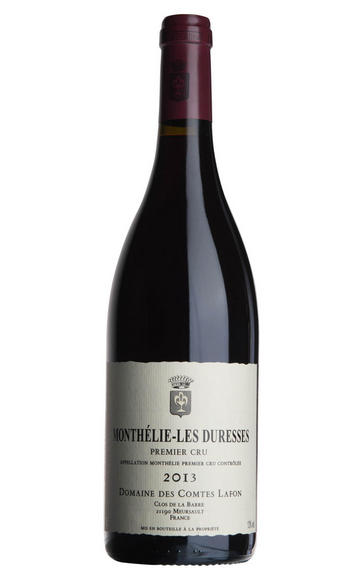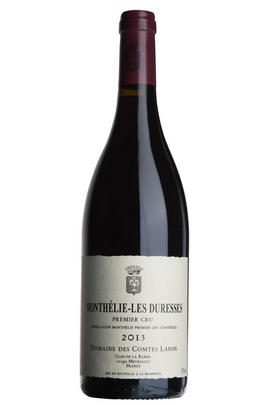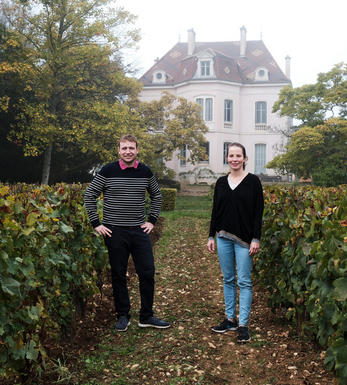
2013 Monthélie, Les Duresses, 1er Cru, Domaine des Comtes Lafon, Burgundy

Critics reviews
Neal Martin - 30/12/2014
About this WINE

Domaine des Comtes Lafon
Domaine des Comtes Lafon is based in Meursault, where it has holdings in each of the finest Cru and Premier Cru vineyards in Meursault. They have a reputation for maintaining the signature character of each site in their wines. They don’t rest on their laurels, though, their red wines from their Volnay Premiers Crus are increasingly popular and should not be overlooked.
The domaine was established in 1869 by the Boch family and has remained in their care ever since – only changing its name when Marie Boch married Comte Jules Lafon in ‘94. When fourth-generation Dominique Lafon took charge in 1985, Domaine des Comtes Lafon already had a reputation for unconventional yet outstanding white wines.
At the time, most of the vineyards were leased out to sharecroppers; but by ‘93 Dominique had reclaimed all of his family’s vineyards and assumed full control of the domaine. Not only are the Lafons’ 15 individual vineyards located in the best appellations in Meursault and Volnay, but they tend to be very well situated within them, and are now cultivated according to organic and biodynamic principles. In 2010, Jasper Morris wrote in his book ‘Inside Burgundy’, that their white wines were “now consistently among the best in Burgundy, while since 1989 the reds have reached the top division”.
In ‘99 the Lafon family branched out, buying a domaine in the Mâconnais at Milly-Lamartine and making wines under the name of ‘Les Héritiers du Comte Lafon’. More recently, Dominique Lafon has also established a small label of his own bearing his own name.
When Dominique Lafon’s father René took over the domaine in 1956, he undertook a significant replanting programme in cooperation with the sharecroppers who managed much of his vineyards. Care for the vines is still paramount under Dominique’s stewardship; all vineyards returned to family control in ‘93, were fully converted to organic viticulture in ‘95 and to biodynamic in ‘98. The average age of the vines is maintained at around 40 years, and yields are kept low at about 35 hectolitres per hectare.
Wines are made differently each year due to practical reasons and vintage variation. However, there are some common practices.
Chardonnay grapes are whole-bunch pressed, settled in tanks at cool temperatures and then fermented and aged in wood. No new oak is used for the village wines; 25-40% new oak is typically used for the Premiers Crus and 100% for Le Montrachet, though these are subsequently racked into older wood where they spend a second winter before bottling.
The Pinot Noir grapes are 100% destemmed and vinified in stainless steel. Wines are matured for 18-22 months in about 30% new oak and are racked twice before bottling without fining or filtration whenever possible.
Domaine des Comtes Lafon have been certified as organic since 1995, and although biodynamic principles have been used since ‘98, they have not sought to become Demeter certified – citing “too much paperwork” as the main reason. The two newer businesses in the family portfolio are also organic, and when new vineyards are acquired, each is converted as soon as possible thereafter.

Monthélie
A small village nestling in a valley behind Meursault and Volnay, Monthelie produces mostly red wines, mini-Volnays with appealing fruit but sometimes a rustic edge, and a small amount of white wine. The best wines come from the steep slopes above the village, such as Les Duresses.
- 109 hectares of village Monthelie.
- 31 hectares of premier cru vineyards (11 in all). Best vineyard is Les Duresses.
- Recommended Producer: Lafon

Pinot Noir
Pinot Noir is probably the most frustrating, and at times infuriating, wine grape in the world. However when it is successful, it can produce some of the most sublime wines known to man. This thin-skinned grape which grows in small, tight bunches performs well on well-drained, deepish limestone based subsoils as are found on Burgundy's Côte d'Or.
Pinot Noir is more susceptible than other varieties to over cropping - concentration and varietal character disappear rapidly if yields are excessive and yields as little as 25hl/ha are the norm for some climats of the Côte d`Or.
Because of the thinness of the skins, Pinot Noir wines are lighter in colour, body and tannins. However the best wines have grip, complexity and an intensity of fruit seldom found in wine from other grapes. Young Pinot Noir can smell almost sweet, redolent with freshly crushed raspberries, cherries and redcurrants. When mature, the best wines develop a sensuous, silky mouth feel with the fruit flavours deepening and gamey "sous-bois" nuances emerging.
The best examples are still found in Burgundy, although Pinot Noir`s key role in Champagne should not be forgotten. It is grown throughout the world with notable success in the Carneros and Russian River Valley districts of California, and the Martinborough and Central Otago regions of New Zealand.


Buying options
Add to wishlist
Description
The 2013 Monthélie les Duresses has a light but pure raspberry leaf and strawberry-scented bouquet that wafts gently from the glass. The palate is medium-bodied with fine tannins, a decent structure, with a sharp, pointed, tart cherry finish. What you might call a "pretty little thing."
Neal Martin - The Wine Advocate #216, Dec 2014
wine at a glance
Delivery and quality guarantee